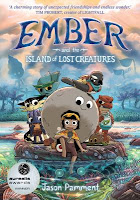CBCA Book of the Year lists always gender healthy discussion and keen readers may ponder the absence of some favourite reads that didn’t make either the short list or the notable list. Avid reader, Nella Pickup, has picked out some of her favourite titles from 2023 to expand your reading – can you think of others?
If you’ve read the CBCA Notables and are looking for more outstanding Australian books to share with young people, this is for you.
Firstly, check out the excellent suggestions at Storylinks and the “I Can’t Believe it’s Not Notable 2024” offerings in the Reading List section – it includes some excellent quality books to explore. These are also available as a pdf document.
Some further suggestions include the following titles.
Younger Readers
French Jackie Secret Sparrow, HarperCollins 97846076468
Based on a true story about a female signaller in WW1 and the British Army’s obliteration of any record showing how women and girls were working behind the scenes, in the trenches and even in battles.
Ember feels like an outsider at his new school for the orphaned and solitary and has to deal with some unusual events. Winner Best Graphic Novel/Illustrated Work Aurealis Award 2024
Edwina Wyatt & Evie Barrow Cub and Brown, Walker 9781760654641
A young cub scout and a bear share adventures and friendship. Twelve stories based on the values of Scout Law. A beautiful book for younger readers.
Eve Pownall
The Big Vision series, Berbay & Vision Australia.
Each book features braille alongside the conventional text and is designed to inspire conversations about inclusivity, representation and resilience.
John Dickson & Philip Bunting Matt Formston: Surfing in the Dark, Berbay, & Vision Australia 9780645558401
John Dickson & Claudia Frittitta Craig Shanahan: Cooking up a Storm, Berbay & Vision Australia 9780645558418
John Dickson & Chantel de Sousa Nikki Hind Dressed for Success, Berbay & Vision Australia, 9780645558401
David Gullan & Suzanne Houghton Life in a Hollow, CSIRO 9781486316342
Explores life in tree hollows and the many native animals who live there.
Suzanne Houghton Where are all the Christmas Beetles, CSIRO 9781486317905
Sparkling, brightly coloured Christmas beetles usually appear in December, but they are disappearing. Where have they gone?
Sandra Severgnini Meet Min, EK Books 9781992539557
Delve into the world of the shallow ocean bed to meet Mim the amazing mimic octopus.
Early Childhood
Raewyn Caisley & Gabriel Evans Count the Stars, Walker 9781760653552
Maddie loves maths; she finds examples everywhere. She longs to find a friend who shares her interests.
Wai Chim & Freda Chiu Last place Lin, Allen & Unwin 9781761067754
Lin's excited about her first school sports day until she comes last. For those who keep trying no matter what happens.
Bethany Clark & Sara Acton You’ve got Yoghurt in your Nostrils, Affirm 9781922848246
A baby’s joyous celebration of eating.
Phillip Gwynne & Tony Flowers Grandma’s First Tattoo, Yaffler Press 9780646854465
The story of Grandma’s tattoo and the excitement it causes at her granddaughter’s school.
Meg McKinlay & Leila Rudge Always Never Always, Walker 9781760655204
A rhyming book of advice such as always follow secret tracks and take useful things, like a torch and fairy-wings.
Sandhya Parappukkaran and Michelle Pereira Stay for Dinner, Hardie Grant Children’s Publishing, 9781761211966
Reshma, Charlotte, Phoebe and Leo eat dinner at each other’s homes; they eat different food in different ways. Reshma is worried as her friends do not lick fingers or burp to show their appreciation of the delicious food. A story of family, diversity, friendship and understanding. Winner 2024 Multicultural NSW Award
Tami Sussman & Tom Jellett Tiny Tradies, Affirm 9781922848123
A big day at childcare described as if the toddlers were construction workers. A delight.
Nella Pickup
Retired librarian; book buying grandmother for 4 boys.











